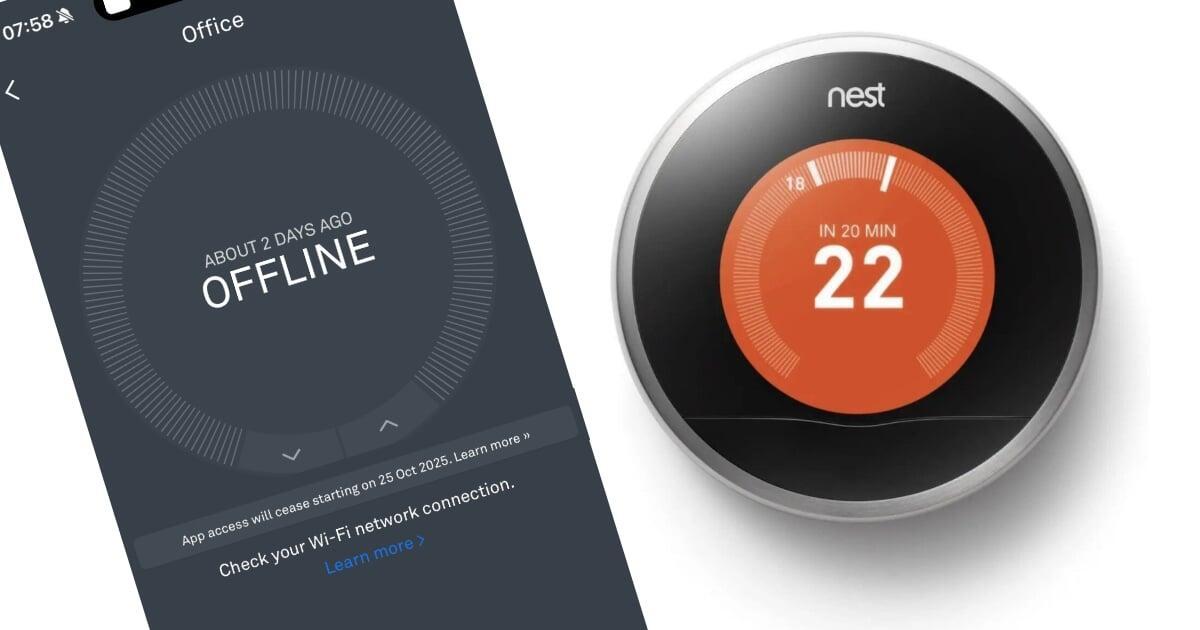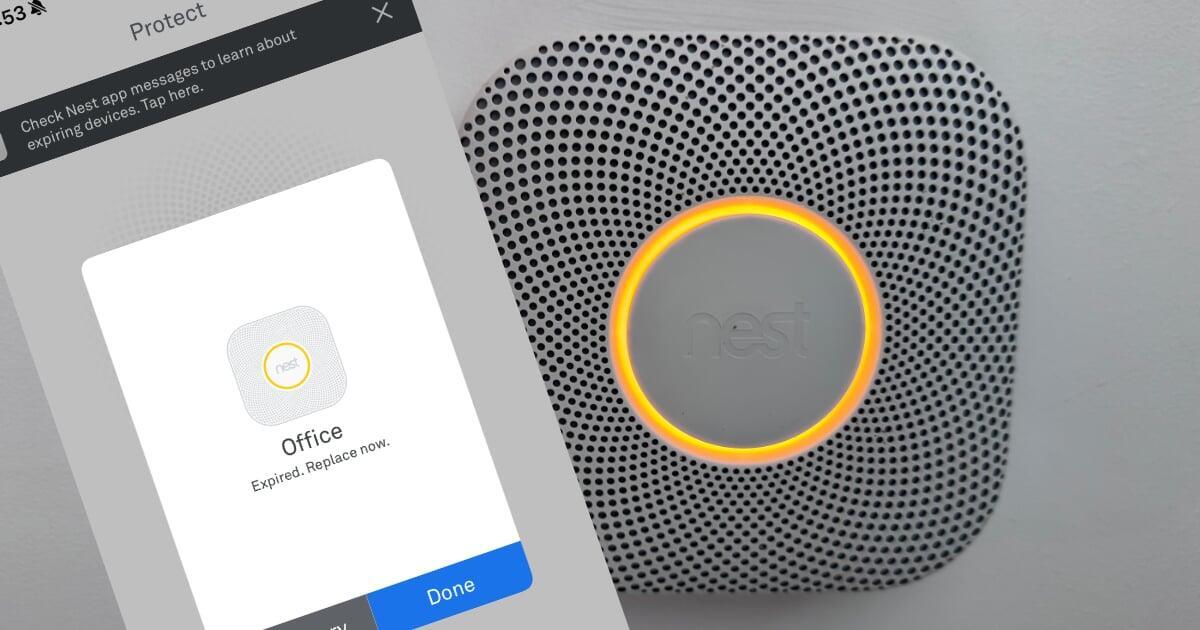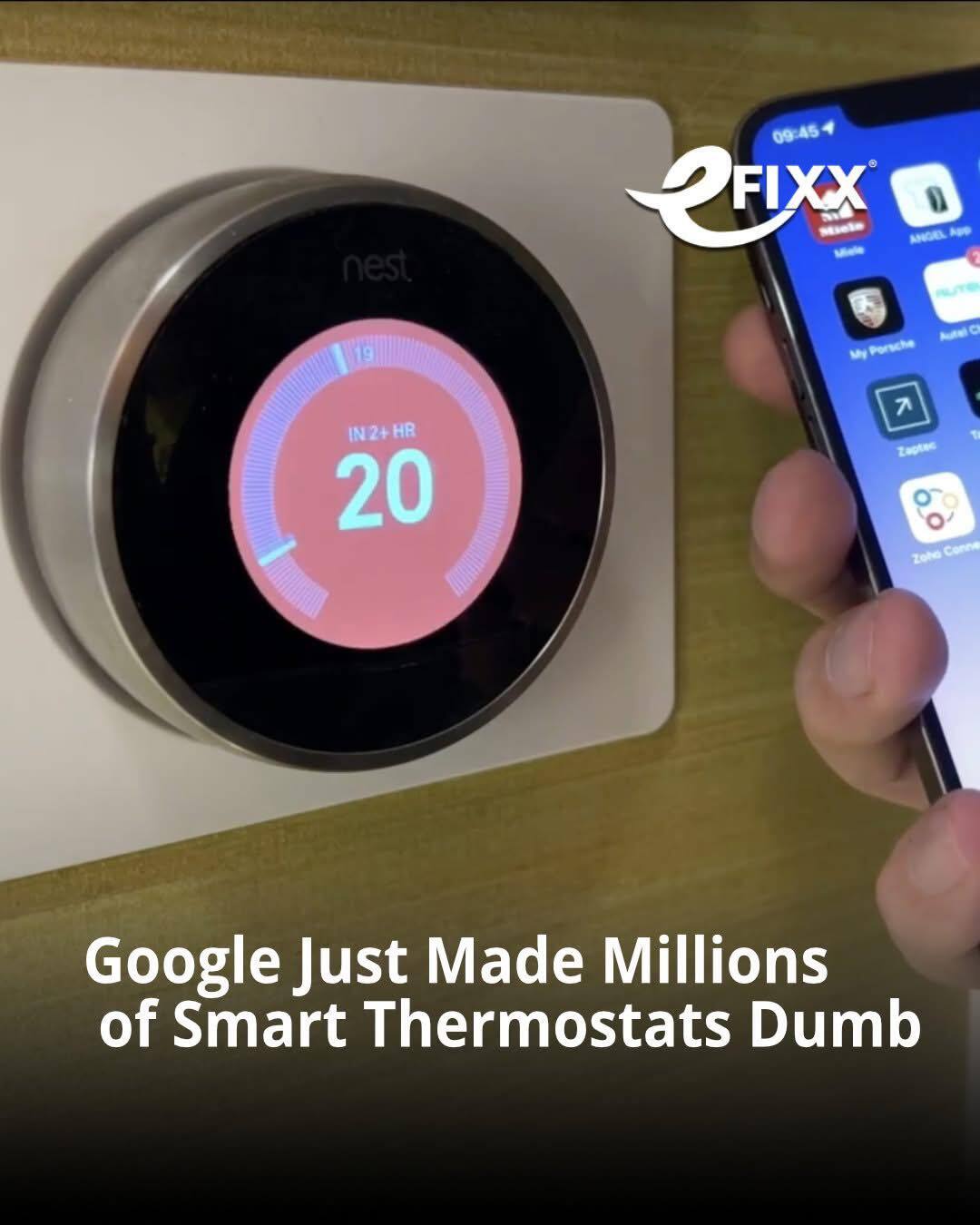I Trusted Google With My Home — Big Mistake
By Gordon Routledge
Wednesday 29th October 2025
SHARE IT
Back in 2014, I built myself a garden office. A little slice of modernity, insulated, wired, and ready for the brave new world of the Internet of Things. And because I’m a sucker for shiny gadgets that promise to make life better (and usually end up making it mildly annoying), I went all in.
I fitted a Nest Thermostat and a Nest Protect smoke alarm – the iPhone of home tech, dreamed up by Tony Fadell, the man who actually helped invent the iPhone. He’d just sold Nest to Google for a cool three billion dollars, and it felt like the start of something genuinely clever.

You have to cast your mind back to what thermostats were like before that. Dumb beige boxes on the wall, slowly turning nicotine yellow even if you didn’t smoke. The Nest was different. It glowed when you walked in, learned your habits, knew when you were home, and, crucially, when your wife had turned the heating up again. It ended decades of domestic thermostat warfare.
And the Nest Protect smoke alarm? That was genius too. Instead of chirping angrily at three in the morning, it spoke to you in a calm, reassuring voice: “Heads up – there’s smoke in the kitchen.” It even acted as a night light, sensed occupancy, and politely ran its own diagnostics. For a brief, glorious moment, it felt like living in The Jetsons.
Okay, there was a trade-off. You had to be comfortable with Google knowing when you were home, how warm you liked it, and when you burned the toast. Essentially, I’d entered into a quiet contract with the devil. But who cared? It worked.
Nest + HomeKit: The Smart Home Combo Google Never Wanted
The Smart Door That Felt Smarter Than Me
As an aside, I even installed a Kevo smart lock – a clever little thing that let you unlock the door with your smartphone. The kids might forget their keys, but they’d never forget their phones. You could send one-time access codes to guests and even get alerts when someone opened the door.
Admittedly, Kevo never really made it in the UK. It was an American import, and like many US tech products, it assumed everyone had a perfectly rectangular front door and Wi-Fi strong enough to reach Mars. But still – for the last decade, all this kit worked. Silently. Reliably. Comfortingly futuristic.
Over the years, I stopped fussing with it. I paid less attention to the monthly Nest energy reports, rarely opened the app to turn down the heating when I was away, and quietly appreciated that it all just did its job.
When Google Joined the Party
Then things started to feel clunky. Google gradually absorbed Nest into the mothership. Some devices migrated to the Google Home app, which – for reasons still unclear to this day – required me to set up a completely different email account. Innovation slowed. Updates became confusing. And the elegant simplicity that once defined Nest gave way to something that felt bureaucratic, like your thermostat had joined a corporate merger.
The Day My Smart Home Went Dumb
Then, last month, I spotted a small message in the Nest app: “Support for 1st and 2nd generation devices will be withdrawn.” It caught me off guard. I’d missed the warning emails – mainly because they’d gone to the random Gmail address I’d been forced to create back when the apps split.
And then came the date: 25 October 2025. As I write this – it’s 29 October – and I can confirm: it’s gone. The thermostat is offline. The once-glowing button on the app is now a greyed-out relic. You can still twist the dial manually, but that’s it. My futuristic, self-learning, energy-optimising marvel has been reduced to a glorified switch.
It’s like watching your Tesla revert to a pushbike overnight.
A Decade Later – Even the Smoke Alarm Quit

Of course, all this happened just over ten years after I first installed it, which fittingly coincides with the ten-year lifespan of a smoke alarm. I’d already replaced the original Nest Protect once, under warranty, about a year in. So this month, on its tenth birthday, it politely told me its time was up. Not with a shrill bleep or an untraceable chirp in the middle of the night, but with a glowing amber halo and a calm message in the app: “This device has expired and needs replacing.”
And you know what? That’s exactly what smoke alarms should do. They shouldn’t beep like a deranged woodpecker until you lose your mind and smash them off the ceiling with a broom.
So far, so responsible. But here’s the sting in the tail: I discovered that while the Nest Protect is still supported in the app, the physical product is no longer manufactured. You can squabble around online, maybe grab a “last-time buy” from some forgotten warehouse, but the writing’s on the wall (and glowing amber). The product’s been quietly discontinued.
The real kicker? I’d gone big on Nest Protect. There are five more in the house, all due to expire next year. So, what now? Do I kick the can down the road and buy replacements for a system that’s already a burning platform – one that Google clearly no longer wishes to support? Or do I start again, rip out a perfectly functional ecosystem, and join the endless merry-go-round of “smart” devices that age faster than fruit in a heatwave?
Smart Lock, Dumb Ending
Just as I was digesting that, Kevo popped up – remember the smart lock I mentioned earlier? The one that made me feel like I was living in the future, where doors opened with smartphones and guests could be given digital keys?
Well, Kevo is now part of the global lock behemoth Assa Abloy, and they too have decided it’s time to move on. Last week, I received a notification: “The Kevo app will be discontinued next month.”
Translation: from next month, your smart lock won’t open with your phone. You’ll need to use the physical key. Which would be fine… if I hadn’t lost the key.
So now, after a decade of frictionless, futuristic door unlocking, I’ll be rummaging through drawers like a Victorian trying to find a skeleton key – because the cloud’s been unplugged.
How the Internet of Things Lost the Plot
Back in 2012, Nest stood alone, a shiny little star in a universe of beige boxes and flickering LEDs. It was the first bit of home tech that actually looked desirable. They managed to get mugs like me to pay ten times more for a thermostat and a smoke alarm than anyone in their right mind should. And we did it gladly.
Nest didn’t just sell gadgets; it sold the idea of living in the future. But fast-forward a decade, and connected products are everywhere. Your kettle, your toothbrush, your fridge – they all want Wi-Fi now.
In a way, Nest seeded the market. It forced the dinosaurs – Honeywell, Drayton, Siemens – to wake up and evolve. And then came the new wave: the Tados of the world, pure-play IoT heating control upstarts, who did what Nest once promised but with a bit more European sensibility. Tado even became the official handover partner for orphaned Nest thermostats.
And just when you thought the dust had settled, along came Matter – the grand attempt to standardise everything. A protocol so universal it was supposed to unite the entire smart home world under one happy Wi-Fi roof. In theory, Matter would let your light switch talk to your thermostat, your EV charger, your voice assistant, and your toaster without a single complaint. It laid the red carpet for a new breed of fast movers like Meross and Shelly, nimble and fearless, building clever, affordable kit that doesn’t need a Silicon Valley overlord to function.
The Subscription That Never Was
Of course, all this happened just over ten years after I first installed it, which fittingly coincides with the ten-year lifespan of a smoke alarm. I’d already replaced the original Nest Protect once, under warranty, about a year in. So this month, on its tenth birthday, it politely told me its time was up. Not with a shrill bleep or an untraceable chirp in the middle of the night, but with a glowing amber halo and a calm message in the app: “This device has expired and needs replacing.”
From Rush Hour Rewards to Kraken Control
Now, the energy suppliers have realised they can play that game themselves. Take Octopus Energy – the cuddly pink octopus with the big smile and the slightly patronising tweets. Behind the tentacles lies a data behemoth called Kraken – a platform that quietly manages millions of smart meters, EV chargers, and thermostats.
And Kraken doesn’t just want to read your data; it wants to control your devices directly. It’s the same principle Nest started – shifting loads, optimising demand – only this time the energy company owns the relationship and the data.
So, while Google steps back from the messy business of hardware, companies like Octopus are sliding in to fill the gap – eager to build their own ecosystems of connected devices, all under the warm glow of “helping you save energy.”
In truth, they just want the same thing Google did: control, data, and leverage. The only difference is that their logo looks cuddlier while they do it.
The Lesson: Who Can You Trust?
So, what’s the lesson in all this?
If Big Tech – with all its money, data, and clever people in T-shirts – can ditch you at a moment’s notice, what hope is there for the rest of us? They can leave you high and dry, with no replacement product, no plan B, and a house full of hardware that now exists purely as a reminder of how gullible we once were.
And it’s not just thermostats and smoke alarms anymore. As the world becomes more electrified, everything’s heading online whether you like it or not. EV chargers, heat pumps, solar inverters, even your tumble dryer – all are now part of the great connected energy ecosystem.
In some cases, they have to be connected by law, as governments and regulators push for demand-side control and smart-grid readiness. And the energy companies? They’re licking their lips. Each smart device becomes another node they can nudge, throttle, or switch off entirely – all in the name of efficiency, of course.
So before you fit, buy, or recommend another smart product, ask two simple questions:
What happens if this device loses its internet connection? Can it still function locally, or does it become a shiny brick the moment the Wi-Fi drops?
What happens if the manufacturer withdraws cloud or app support? Will it still heat the house, charge the car, or open the door – or will it sulk quietly in a corner until you replace it?
Then there’s the brand question. Do you trust that EV charger from a flashy start-up, or do you go with a global name? Remember: the more chargers they sell, the more support they have to fund – and the longer they have to keep those servers, apps, and security updates running.
Can they make enough money from your data to sustain all that? Because if not, your shiny new connected product might just be another ten-year time bomb, ticking away until someone in a boardroom decides it’s time to pull the plug.
So yes, I still love the idea of smart homes. I still want gadgets that talk to each other and quietly make life better. But next time someone tells me their new connected whatever “learns” from their behaviour, I might just ask: for how long?
Because as I’ve learned the hard way, even the cleverest device in the world eventually forgets who you are once its maker decides you’re no longer worth remembering.
SHARE IT
CURRENT THINKING
V2G: The Vicar’s Wife Drove it; Now it Runs Your House.
The term game changer gets thrown around like confetti, but with vehicle to grid (V2G) it’s deserved. Your EV is a battery on wheels. With a compatible car and the right charger, vehicle to grid (V2G) will run your home, support the grid, and might even boil the neighbour’s kettle.
TradeKart: The App Delivering Materials in 30 Minutes
It’s 3pm on a Friday, you’re mid-install and run out of the one thing you need to finish the job. Normally that’s game over - but not with TradeKart. Built for trades, it delivers tools and materials to site in 30 minutes, keeping you working, not waiting.




